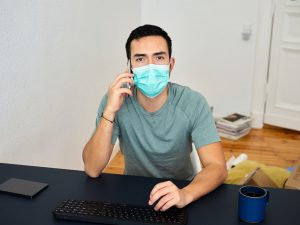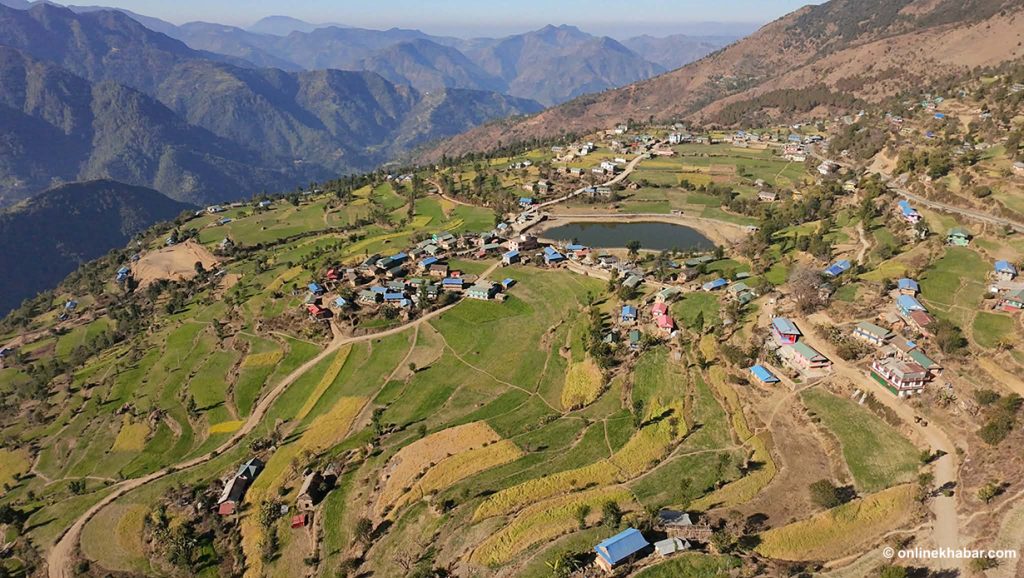“Working as a remote caregiver gave me a sense of practical and intellectual thrill.”
- A member of the Covid-19 Special Nurse Group
It was at around 4 pm on May 9, 2021. A handful of the nurses specialising in women health and development and child health nursing at the Tribhuvan University Teaching Hospital came together to discuss the possibilities of their contribution during the Covid-19. But, they were least aware that they had initiated a conversation that would later be a pioneering work on remote nursing care in Nepal.
The Covid-19 Special Nurse Group members hail from every province of Nepal and are providing nursing services remotely, using telecommunications guided by the principle of telenursing.
This article will walk you through the group members’ personal accounts of working as a remote caregiver, the benefits to nurses at the personal and professional levels and in doing so, we will attempt to draw lessons from the developed world where remote care is flourishing.
Personal benefits to members
While asked about the benefits of telenursing practice at the personal level, these nurses became animated. One shared that such engagement gave her “a sense of practical and intellectual thrill”. For instance, she said, “When I received a call, I do assessment using the guideline of telenursing and my clinical judgements. After this, I prepare a few nursing diagnoses and continuously advise patients, follow them up and monitor if their symptoms are improving or need a hospital referral. Thus, I achieve the implementation and evaluation steps of the nursing process. On this very note, another nurse opened up the “profound satisfaction” in being available to attend to the patients’ needs without expecting anything in return. Both agreed on one point that such voluntary work gave them a sense of pride and identity in their entire community, something which was not quite possible through a confined role in a clinical setting and with a paid job.
To the question of how they see telenursing contributing at the professional level, I received diverse answers ranging from being able to provide holistic care autonomously, ensuring patient-centred care to a vivid description of the scope of remote healthcare in Nepal. Concerning the feeling of autonomy, this group shared an example of how they formulated a protocol for their remote functioning based on current research and scientific knowledge on telehealth, and most importantly guided by their pilot study. The guideline that they prepared has since then directed them to function autonomously and ethically.
While drawing an intersection between holistic care and functioning autonomously, one respondent compares telenursing to that of her role as a clinical nurse and elaborates that when she is available remotely, she can “zoom-out” unlike her clinical roles that just makes her attentive to the physical need of the patients. Through this “zooming out” aspect, she continuously follows up and monitors her patients by asking open-ended questions. She was full of stories of how she listened to not just physical ails, but also other contributory familial and community factors that bar a patient from recovering, mentally and emotionally. She finished by saying, “A phone call with me was also a means of catharsis for my patients”.
Learning for Nepal
The prospect of remote care as a holistic approach and patient-centred care in medical and nursing care has been emphasised by the western community who have practised it for decades. Dr Karen Rheuban, a medical director of the University of Virginia Office of Telemedicine, in one of her videos describes their “cancer centre being without walls” where they not only provide patient evaluation and follow up but help the communities get together and have the patient education programme broadcast by the health providers to their patients in their respective settings. She adds that the provision of care away from a hospital or clinic at the comfort of the patient’s house or community makes them engaged and accountable for their own care.
A nurse from New Zealand Nurse’s organisation working as a telenurse adds to this narrative. She opines that providing care to patients in their comfort zones ensure even distribution of the balance in power between the nurse and patient, thus empowering them during their healing process. The concept of patient participation in care is hailed by the WHO as an important aspect of patient-centred care to improve patient safety. The nurses of the Special Nurse Group confirmed this with their personal experiences of patients (and their families) feeling more engaged and empowered when they involved them in their care.
In an article, the author from the Kathmandu Medical College outlines the scope of telenursing that runs up and beyond the usual telephonic conversation between nurses and patients. This includes interactive videoconferencing with patients and experts, assessing patients remotely using self-measurement devices or taking care of their personal alarm to ensure immediate care when in distress or receiving experts’ instructions through manipulative sensors and real-time chat. The writer also succinctly sheds light on telenursing as an evolving opportunity to increase the availability, accessibility and affordability of healthcare, including the skill development of all the human resources involved in the process.
The Covid-19 Special Nurse Group, having deployed “the local nurses” at the provincial level, shares telenursing is truly a medium to provide culturally and linguistically congruent health services. For instance, the nurses in its team were well-versed with the major linguistic and cultural values and local inclinations of the community that they were in charge of. When patients from such locality hear a voice that is relatable to them, they open up about their medical needs easily. With this level of comfort, these nurses note that they had more people asking for frequent medical advice and also questioning about the discharge instructions. Meanwhile, the nurses also recall patients expressing the benefits of knowing about the preventive measures instead of paying for the expensive hospital beds (which usually is the case). Thus, with these personal observations, the nurses were certain that such remote nursing service could make their patients in charge of their own health behaviours.
Lastly, the concept of remote care in Nepal is at its nascent stage with just a few initiatives such as 30 rural telemedicine services launched by the government, a few community telehealth services or similar ad-hoc projects initiated by hospitals or INGOs and telecounselling services during Covid-19. However, the personal experiences of these nurses and the mammoth of knowledge and application already with the global community, our health system perhaps should encourage research and conversation around telehealth in Nepal. Because, in the end, the faster we acknowledge the unprecedented turn of millennials into digital platforms for services, the better will we be in a position to serve these evolving health needs and demands.
—
Pun is a registered nurse in Nepal and a freelance writer and health researcher. Sapkota is a youth health advocate and recently honoured by Women on Global Health in collaboration with the WHO, UNFPA, ICM, ICN and Nursing Now. At present, she is working as the national coordinator of Special Force Nurses for Covid-19.






















